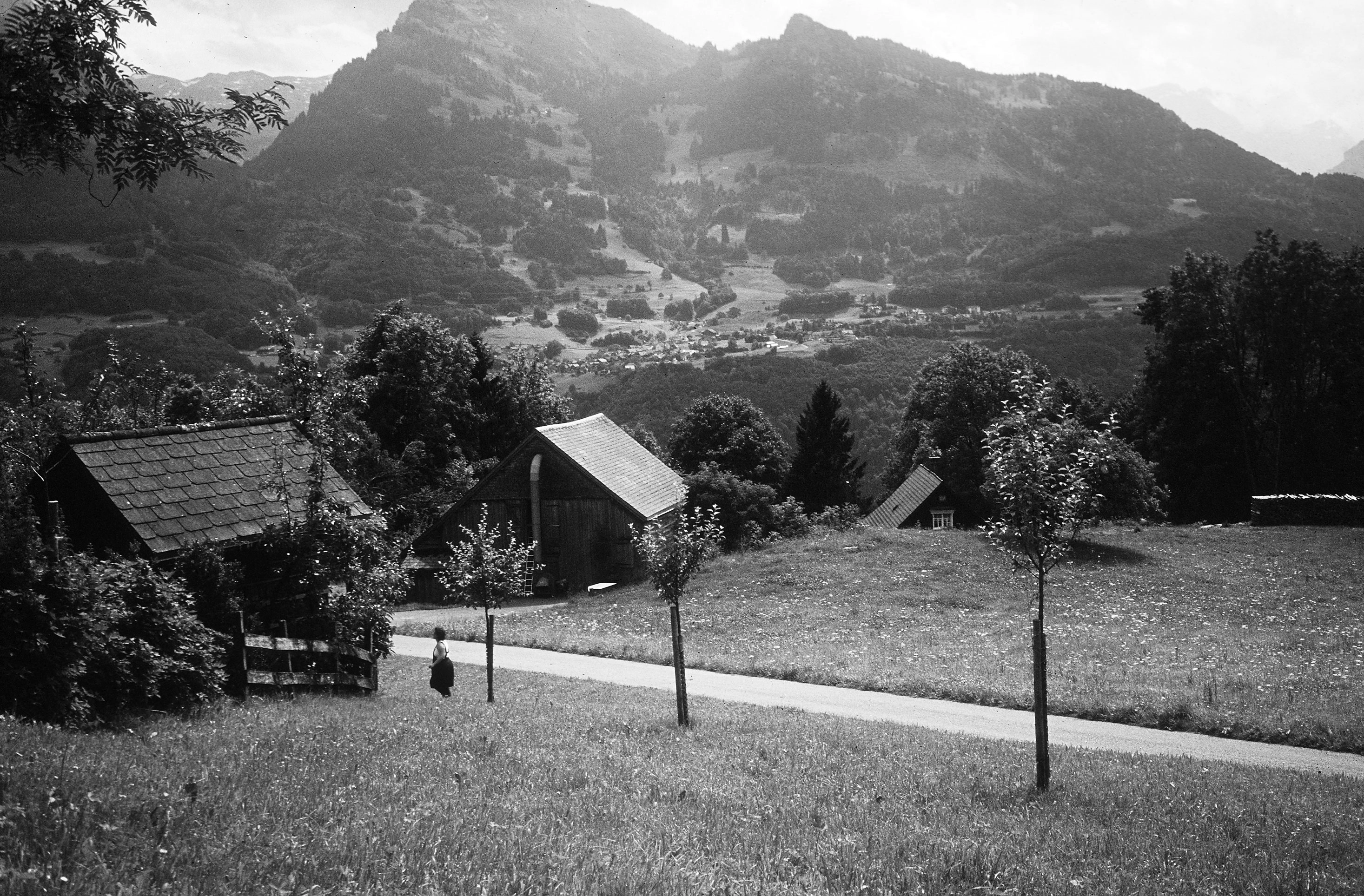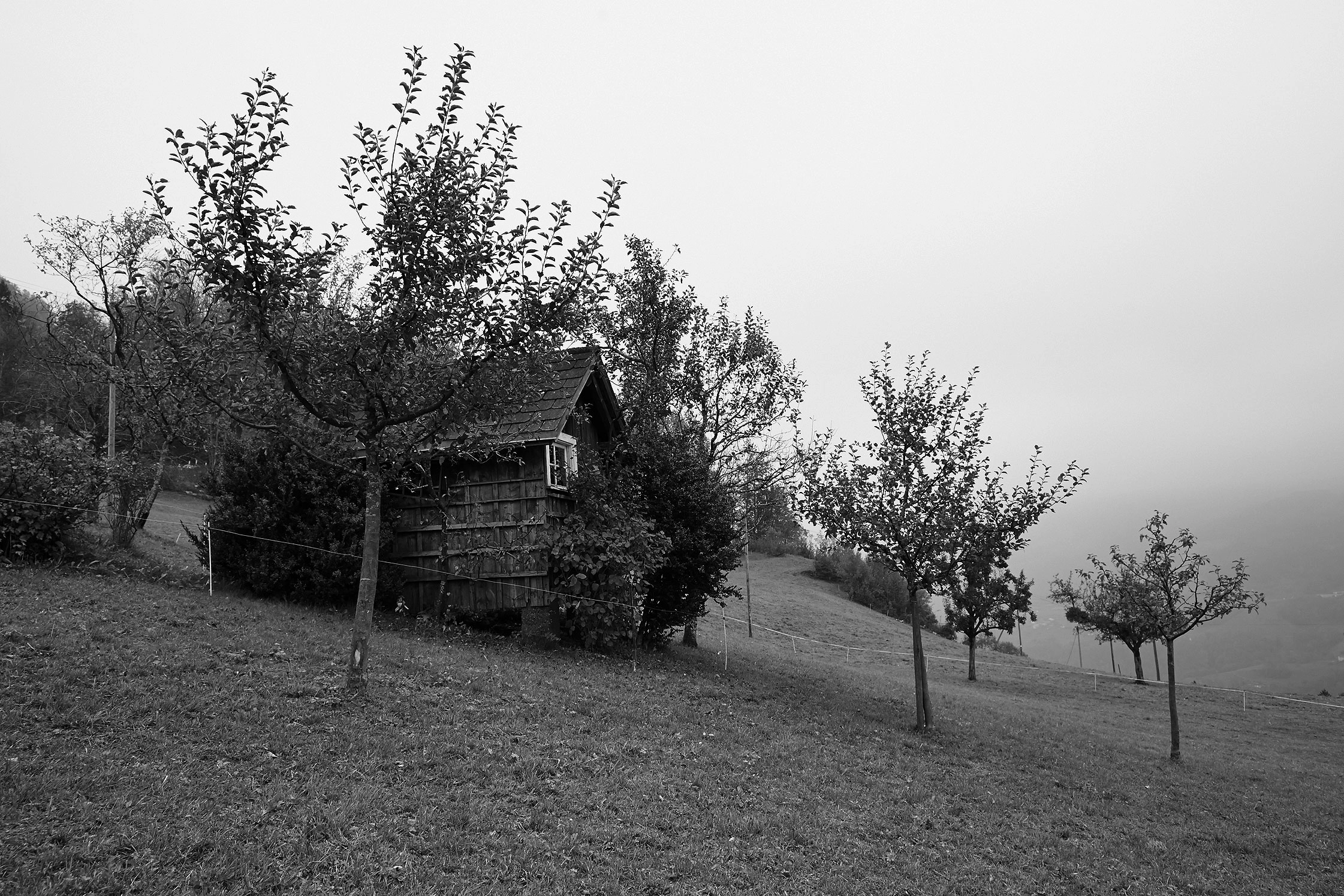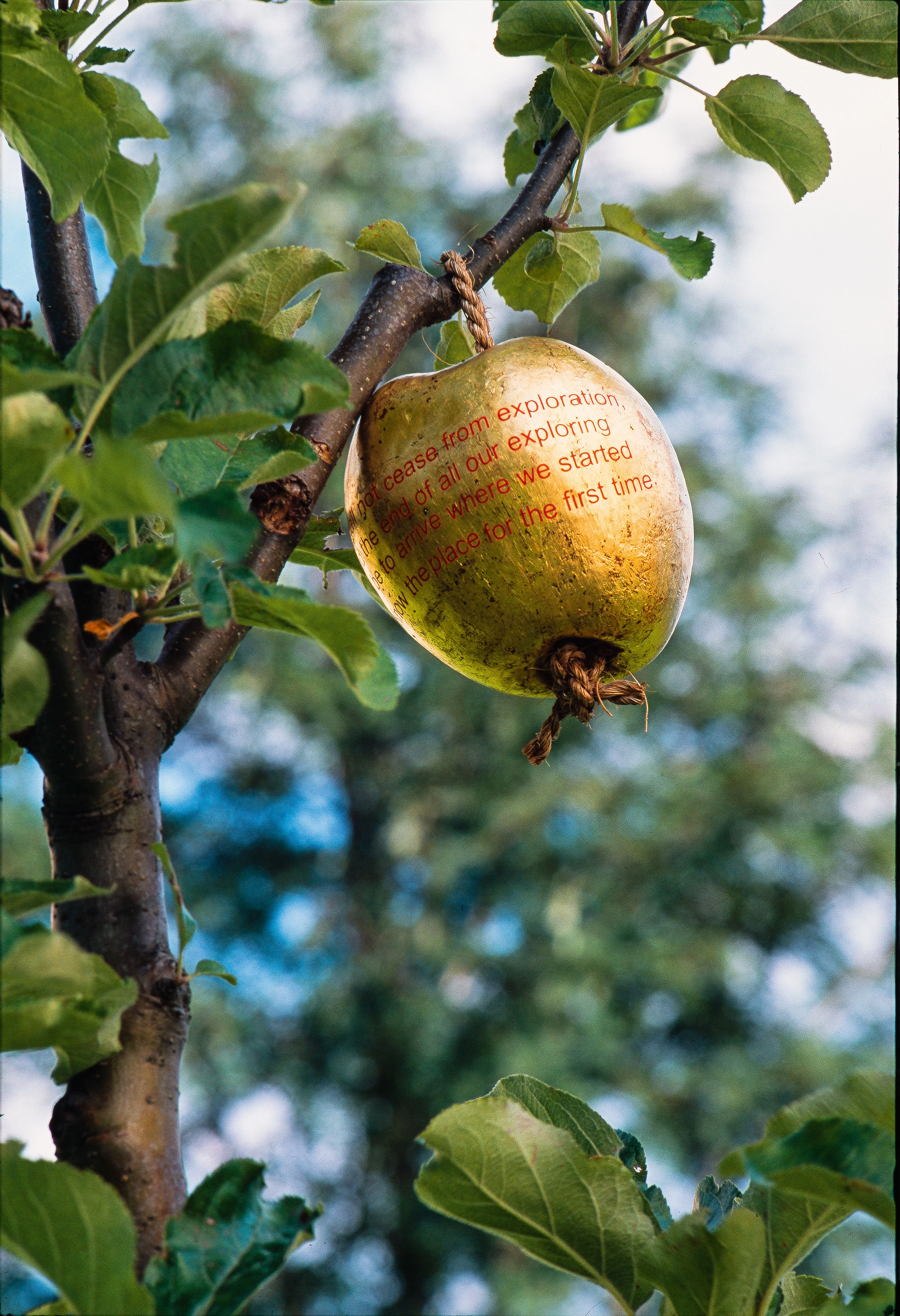When the Scottish artist Anya Gallaccio visited Amden for the first time in the depths of winter, she knew little about the landscape and the history of the region. Walking through the snow with her, I mentioned Josua Klein’s failed attempt to create a heaven on earth here, the story of which I was just then preparing for publication. On our tour, Gallaccio noticed a small, isolated, and not particularly robust-looking apple tree. The impression the tree made on her became the basis of the project that she created for Amden as part of the exhibition Viereck und Kosmos (Square and Universe).
The cultural and historical significance of her chosen materials plays an important role in the conceptual phase of Gallaccio’s art, while the implementation of her ideas is determined by the artistic and visual potential of a particular material and the spatial context in which the work will be seen. In the summer, the artist hung dense clusters of plump, red apples around the trunk and from the branches of the old apple tree. In a reversal of nature, the branches looked as if they were growing out of the apples. Gallaccio selected fruit that not only embodied the quintessential apple, but also, paradoxically, a manufactured product rather than something organic. She wanted apples that were a plain dark red and as smooth and round as possible. She was not interested in tasty fresh apples but in uniform, visually indifferent pieces of fruit. The character and appeal of Gallaccio’s work with organic materials lie in the instability of the images she generates. That applied in Amden as well, where after a few days the clusters of red apples began to turn brown; the crisp fruit softened and decayed; and the once hard apples imploded or shrivelled into dried-up pieces of fruit.
Anya Gallaccio’s project in Amden comprised several elements, some of which were not perceptible as works of art but could only be conceptualized. Thus she had a row of apple trees planted, all old varieties with eloquent names, near the house where the German painter Willi Baumeister (1889–1955) had lived as one of the artists in Otto Meyer-Amden’s circle in 1912/13. These trees have now taken root and are bearing fruit. Robert Büsser made schnapps from the apples on his farm Haus Schwanden and Gallaccio designed the labels for the bottles, one special batch of which went round the world as an artist’s edition.
That was in July 2001, two years after her exhibition, when Gallaccio returned to Amden again for a few days. While there, she adorned each of the trees with one gilded apple, which gradually dried out in the course of the summer.
At the beginning of the season, one of these apples bore a quatrain by T. S. Eliot. Looking back, the poet’s lines seem to capture my own experience as I continued to work with the artists in the years that followed that first exhibition:
We shall not cease from exploration,
And the end of all our exploringWill be to arrive where we started
Will be to arrive where we started
And know the place for the first time.
– T. S. Eliot, Four Quartets, Little Gidding, V, September 1942.
– Roman Kurzmeyer

 Images
Images
 Info
Info






 Next Exhibition
Next Exhibition